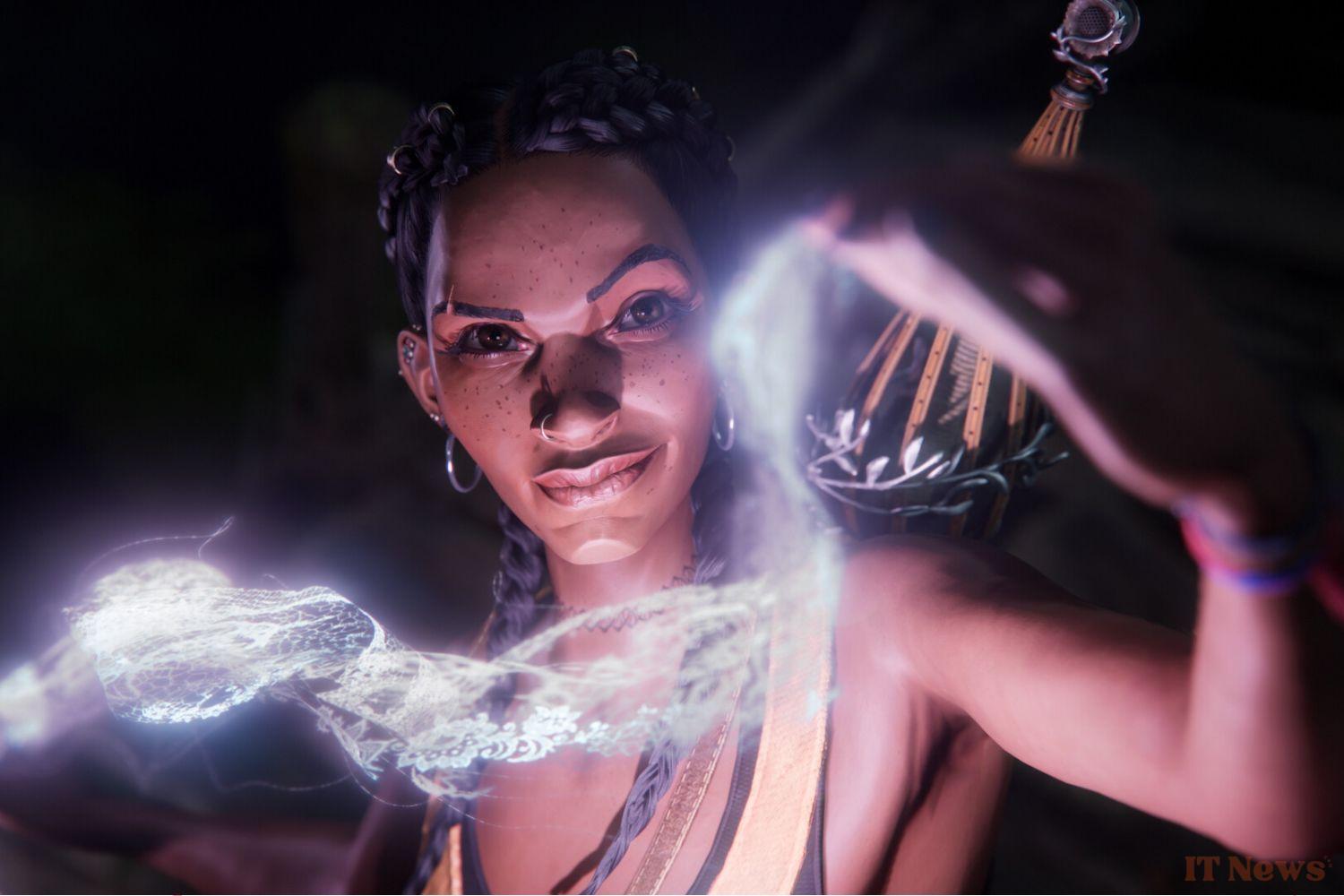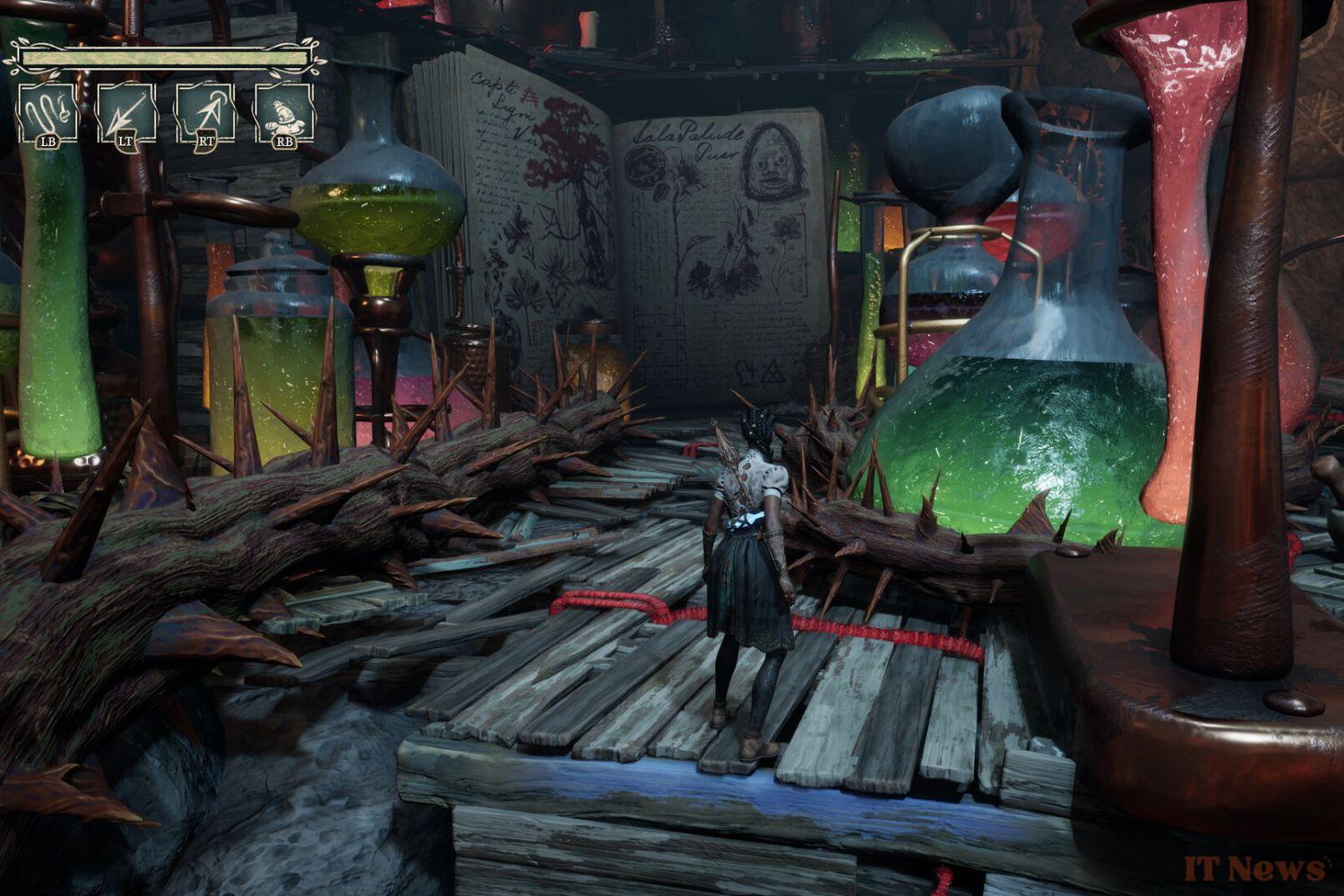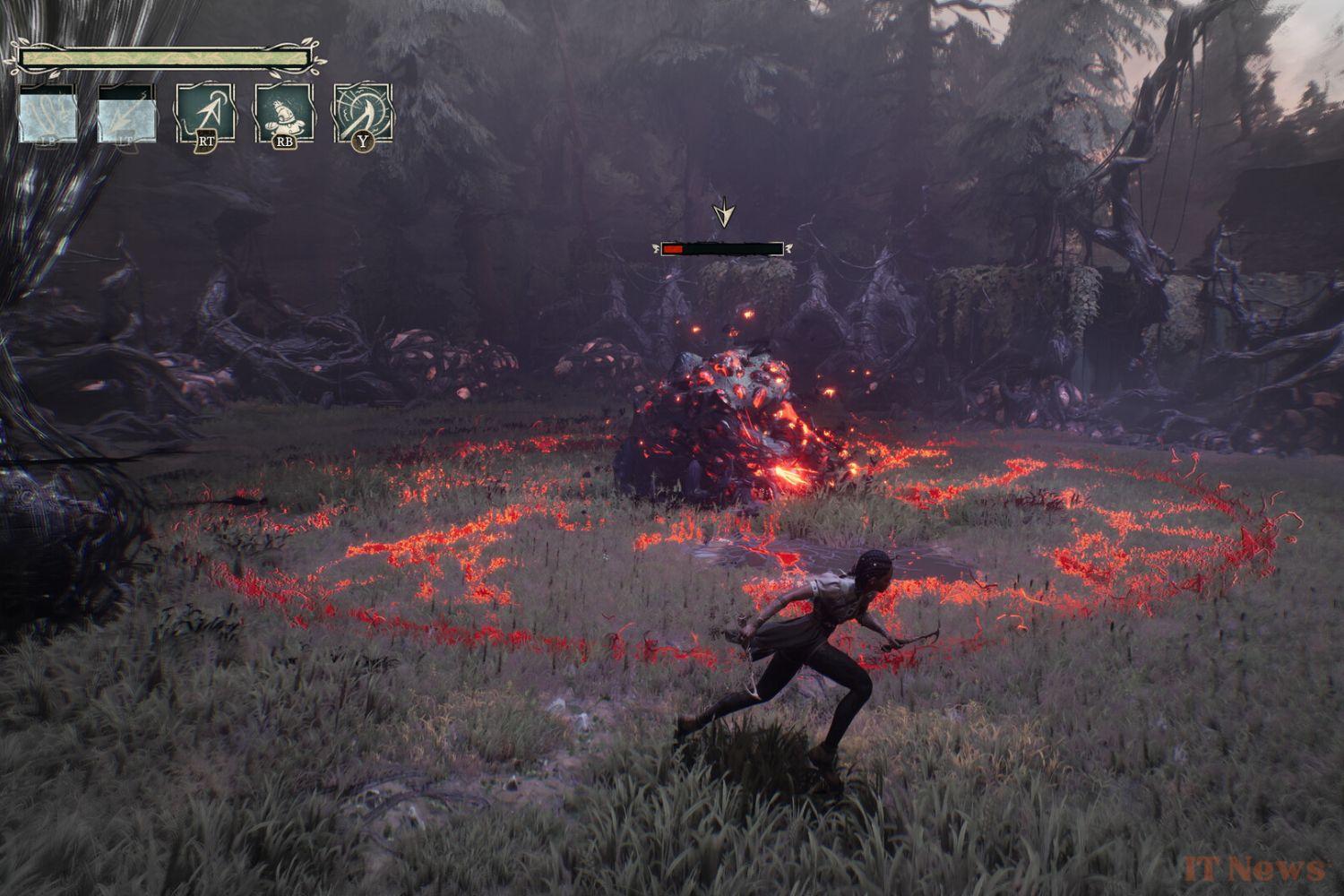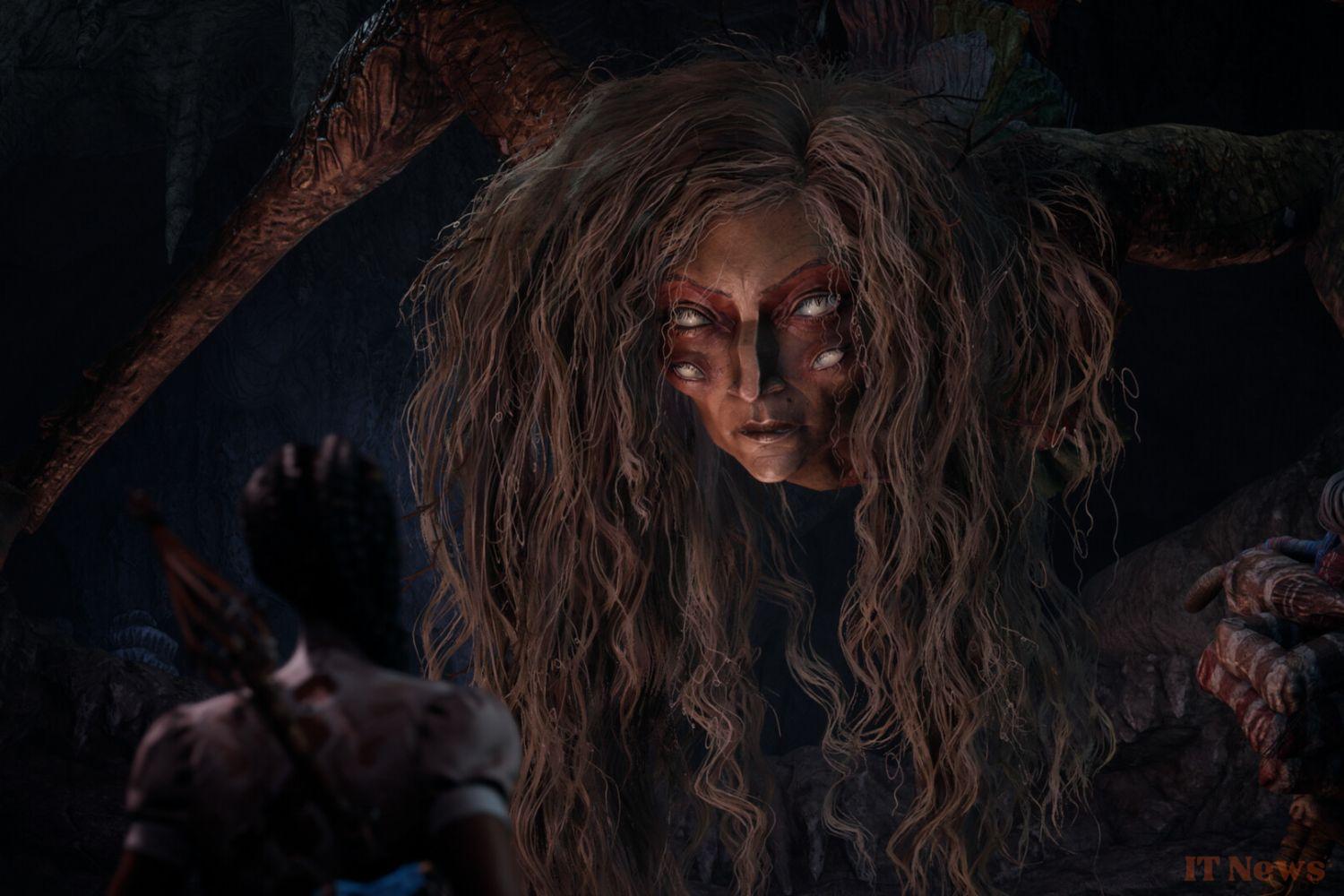Compulsion Games has struck again. The teams behind We Happy Few and Contrast are back in the spotlight with South of Midnight, an adventure game that's quite different from the studio's other works, both in format and content. However, it still retains the desire to impress players in one way or another.
In South of Midnight, you play as Hazel, a young woman living in the American South. One day, after a (super)natural disaster, she discovers her skills as a weaver. Hazel, unlike the threads of fate, is more of a magical healer capable of repairing the wounds of the soul by reweaving the broken bonds of the mind. Her new powers will help her understand the situation in the region and find her lost mother.
Through its cultural heritage, its artistic direction, and its fanciful story, South of Midnight has everything it takes to make an impression. Has Compulsion Games succeeded? The answer is in this South of Midnight review.
Visually uneven
If South of Midnight has remained etched in our minds since its first announcement, it's thanks to its short but impactful teaser. The game's graphic style, as well as its jerky animation and fantastical settings, caught our eye and piqued our curiosity. The title has since come a long way in its communication and we know that these visual choices have been integrated into the full game.
The world of South of Midnight is halfway between our modern reality and a universe populated by folkloric creatures. At first glance, the game is visually enchanting and stands out thanks to its 12 frames per second animation that recalls the stop motion technique and the cinema of Guillermo Del Toro. This distinction is felt even more during the cutscenes rather than in the gameplay phases, which will be much more fluid for playability concerns.
From the first seconds, we dive into a typical Louisiana, sunny despite the storm, full of character and history. We appreciate the diversity of the characters, but also their character, and all their physical details that betray their deep nature and personality. This is an asset in a game so focused on symbolism.
While the overall look of the game is appreciated, South of Midnight struggles to balance its experience over the long term. Even on Xbox Series S, we suffer from excessively long loading times between different scenes, and even during certain combat or transition animations.
The old often coexists with the new, and while we love the attention paid to detail, certain textures, and the richness of the scenery, we come up against the legendary techniques of invisible walls or mountains a little too often to close off certain playable areas from those that are not. The environment allows us to be admired thanks to the refined HUD, more or less in line with the gameplay of the game, which is not very advanced in terms of difficulty.
A long quiet river
With a few exceptions, there is a very real phrase in the world of video games: The more information there is, the more complicated the gameplay will be. South of Midnight is not one of those demanding RPGs with which our strategic fiber will be exploited. This is a pure adventure game, with a few choices that impact the main character's development, but nothing extravagant.
Hazel's story is divided into chapters, told like a modern-day fairy tale. The young woman must save her mother at all costs, and encounters obstacles and allies along her winding path. We alternate easily and quite naturally between the exploration phases and the narration, which has its own mascot named Barbotte.
Everything in South of Midnight makes us appreciate the characters. Their stories are endearing and their role often a little deeper than what appears when we start playing. The connections are woven visually, but also metaphorically with the player.
Between magic and reality, it's sometimes hard to understand what Hazel sees and what the common vision is. Only the protagonist seems to be endowed with powers, but the elements often merge. Nothing that hinders progression, however.
In her adventure, Hazel encounters the troubles of the inhabitants of the city of Prospero, and must untangle each knot before moving on to the next. In its construction, the gameplay becomes repetitive over time and is only relieved by the diversity of the narratives told. Even the combat offers little, if any, innovation. The mechanics are extremely simplistic—approachable—and the main enemies have rather standard characteristics.
RPG fans should put away their character sheets; there's nothing here to play the strategist other than the limited skill tree displaying basic skills. The emphasis is instead on exploration thanks to a long list of collectibles that have little importance for the gameplay, but which definitely contribute to understanding the story.
The only resource is very easy to find, but still pushes you to search for hidden nooks and crannies. This is where the level design is quite good because it doesn't seem linear, although in reality it is. On the other hand, the environmental puzzles aren't very complicated either.
Louisiana in a Bottle
If the studio doesn't particularly emphasize gameplay, it's primarily because South of Midnight is an incredible showcase of traditional Louisiana, its customs, folklore, and myths. The game is packed with cultural representations, some subtle, others less so, that will remind seasoned players of New Orleans, or even the movie The Princess and the Frog.
All the creatures Hazel encounters, or fights, come from the stories of the Bayou. Their representation here is both faithful to their true description, but also bears the studio's mark. Boss fights are often epic because everything is large and imposing. This feeling is reinforced by the view and scale of the characters in relation to the setting, which gives the impression that this little Louisiana is a microcosm encapsulated in a bottle.
At the end of our adventure, if there is a single aspect of the game that will be remembered more than the others, it is its musical universe. Hazel's adventures are not only narrated by Barbotte, but also sung. The music draws inspiration from swamp pop and zydeco, as well as the Cajun country genre. The lyrics resonate with the events occurring in this bespoke composition, each song being created for the character it represents.
This magnificent score is by Olivier Derivière, who composed the music for the A Plague Tale and Dying Light 2 sagas. In addition to being incredibly immersive and oddly timeless, the songs guide our path, our emotions, and the action moments perfectly. The melodies adapt to the intensity of the moment with rather good relevance. There's nothing like fighting a giant crocodile to the rhythm of music bearing his image, his name repeated over and over in a mystical and almost ritualistic way.
South of Midnight perfectly transcribes everything that the artistic culture of the American South has to offer, failing to make an impression with its traditional playful aspect. It contains everything that makes Louisiana an enigmatic region, its culture of magic and voodoo.







0 Comments